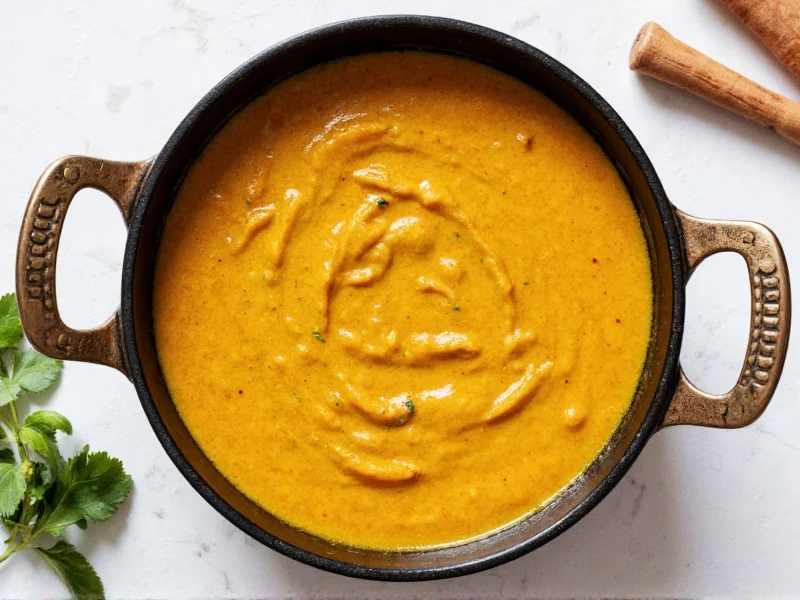Many home cooks confuse turmeric with curry due to their frequent association in Indian and Southeast Asian cuisine. This misunderstanding often leads to recipe errors and culinary confusion. Understanding the distinction helps you use these ingredients more effectively in your cooking.
What Exactly Is Turmeric?
Turmeric (Curcuma longa) is a flowering plant whose rhizome (underground stem) is harvested, dried, and ground into the bright yellow-orange spice we use in cooking. Native to Southeast Asia, this ancient spice has been used for over 4,000 years in both culinary and traditional medicinal practices.
The active compound curcumin gives turmeric its characteristic color and potential health benefits. When used in cooking, turmeric provides an earthy, slightly bitter flavor with subtle notes of ginger and citrus. It's important to note that turmeric alone doesn't create the complex flavor profile associated with curry dishes.
Defining Curry: More Than Just a Spice
Curry isn't a single spice but rather a culinary concept with multiple interpretations:
| Curry Definition | Description | Common Ingredients |
|---|---|---|
| Curry Dishes | Stews or sauces from South Asia featuring vegetables, meat, or fish in spiced gravy | Turmeric, cumin, coriander, chili, ginger, garlic, tamarind |
| Curry Powder | Western-created spice blend attempting to replicate curry flavors | Turmeric (20-30%), coriander, cumin, fenugreek, chili |
| Regional Curries | Specific dishes like Thai green curry, Japanese curry, or British curry sauce | Varies significantly by region and recipe |
Why People Confuse Turmeric With Curry
The confusion between is turmeric the same as curry stems from several factors:
- Color association: Turmeric gives curry its signature yellow hue, leading many to equate the color with the entire concept of curry
- Western simplification: Commercial curry powder often lists turmeric as the first ingredient, reinforcing the misconception
- Language evolution: The word "curry" entered English from the Tamil word "kari" (meaning sauce), but Western cultures simplified diverse South Asian dishes into a single category
Can You Substitute Turmeric for Curry?
Understanding can I use turmeric instead of curry is crucial for successful cooking. While turmeric contributes to curry's flavor profile, it cannot replicate the complex blend of spices that define curry. Using only turmeric where curry is called for will result in a one-dimensional flavor missing the depth provided by other essential spices.
For authentic curry flavor, consider these approaches:
- Make your own blend: Combine turmeric with coriander, cumin, fenugreek, and chili for a more authentic flavor than store-bought curry powder
- Use regional pastes: Thai red or green curry paste, Japanese curry roux, or Indian curry masala each provide distinct flavor profiles
- Toast whole spices: Dry-toasting whole spices before grinding releases more complex flavors than pre-ground blends
Maximizing Turmeric's Potential in Cooking
When exploring what is turmeric in curry, remember this versatile spice has applications far beyond curry dishes:
- Golden milk: Turmeric combined with warm milk, black pepper, and honey creates a popular wellness beverage
- Rice and grains: A pinch of turmeric adds color and subtle flavor to cooked rice, quinoa, or couscous
- Marinades: Turmeric helps tenderize proteins while adding earthy notes to chicken, fish, or tofu
- Vegetable dishes: Roasted cauliflower, potatoes, or carrots benefit from turmeric's warm flavor
For optimal flavor extraction and absorption of curcumin, always combine turmeric with a fat source (like oil or coconut milk) and a pinch of black pepper. This combination significantly increases the bioavailability of turmeric's beneficial compounds.
Common Misconceptions About Turmeric and Curry
Several myths persist about the relationship between these ingredients:
- Misconception: "Curry powder is authentic to all Indian cooking"
Reality: Most Indian households create fresh spice blends rather than using pre-mixed curry powder - Misconception: "All yellow curries get their color solely from turmeric"
Reality: Some regional curries use saffron, annatto, or other coloring agents alongside or instead of turmeric - Misconception: "Turmeric and curry have identical health benefits"
Reality: While turmeric has specific properties, curry blends contain multiple spices each with their own nutritional profiles
Practical Cooking Tips
When working with these ingredients, keep these guidelines in mind:
- Store turmeric in an airtight container away from light to preserve its color and potency
- Add turmeric early in the cooking process to allow its flavors to develop fully
- Be cautious with quantities—too much turmeric creates bitterness rather than enhancing flavor
- Wear gloves when handling fresh turmeric to avoid staining your hands
- Understand that difference between turmeric and curry powder affects substitution ratios in recipes











 浙公网安备
33010002000092号
浙公网安备
33010002000092号 浙B2-20120091-4
浙B2-20120091-4